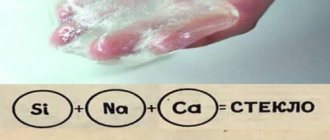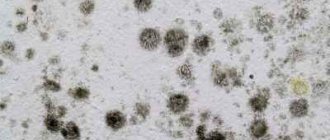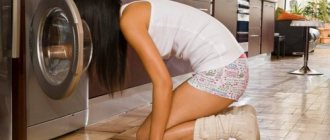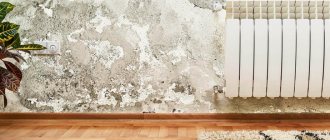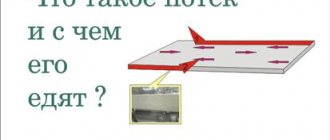In addition, food stored in the cellar suffers from this. White mold in the basement capable of spreading to any other objects and multiplying very actively, which greatly reduces the shelf life of products. If found white mold in the basement like cotton wool, you should definitely start destroying it. This article will help you do this correctly to make it impossible for the white mold parasite to reappear.
What is mold
Fungal colonies that develop from spores are called mold. Its spores almost constantly float in the air, and only under the influence of various unfavorable factors do they “wake up” and begin to actively reproduce. Fungi can grow on wood, concrete or paint. Currently, there are different types of mold. Depending on this, there are spots that look like cotton wool in black, brown, white and green. There are also glowing fungi, but they are not dangerous for basement walls.
White mold can easily destroy finishing and building materials, often even reaching the base. In this regard, owners of mold in the basement should think about getting rid of this parasite as soon as possible, otherwise they will have to do a full-fledged renovation, or even a rebuild. There are black, brown and white mold. Its color depends both on the type of fungus and on the stage of development, as well as the color of the surface where the parasite has settled.
Causes of Fluffy White Mold
- Clogged or missing ventilation shafts. Lack of air supply contributes to further mold contamination of the walls.
- Storing rotten vegetables and fruits. Such products are sources of mold.
- Use of wood products that are infected with fungus.
- Increased air humidity, constant accumulation of condensation. As a rule, this aspect depends on the first factor.
- Poor indoor air circulation.
Depending on the size of the fungal colonies, the methods of controlling parasites also differ. Without eliminating the unfavorable factor, it will be very problematic to protect the integrity of the premises and human health.
Prevention of occurrence
To prevent the fungus from multiplying, you need to ensure that a number of conditions are met:
Humidity level control. The most suitable range is from 45 to 60%.- A high-quality hood is essential in the kitchen. When liquids boil for a long time, you should promptly remove condensation from the walls and ensure that the humidity does not exceed the permissible norm.
- The bathroom should be dry. After water procedures, the bathroom door should be left open - this will allow air to circulate better. An additionally installed electric heated towel rail can provide normal humidity and air temperature in the bathroom.
- Violation of the technology for installing plastic windows leads to condensation. It should be removed on time, otherwise a colony of mold will quickly grow, which will then spread to the walls.
- Gaps on the outside of the house can cause the walls to freeze. If this is the reason, mold begins to multiply in characteristic places: corners and joints. We must not forget about the seams between the tiles and other gaps, periodically checking their condition.
- You should not dry clothes directly in the room, and especially not place the dryer close to the wall. It is necessary to maintain optimal air temperature - no less than 18, no more than 25 degrees.
Favorable conditions for fungal growth
For white mold to appear in a basement or cellar, specific conditions are required:
- Presence of spores in the air. They are transported and easily settle in the cellar on animals, products and people.
- Nutritious organic medium (wood, soil, paper or peat pots).
- Favorable microclimate (temperature about 20 degrees and high humidity). In addition, non-functioning or poor-quality ventilation in the house has a bad effect.
Certain varieties of white mold reproduce even at temperatures of 0 degrees.
It is important to pay attention to the ventilation system in the house. Normal and constant air movement prevents white mold spores from attaching to any surface. In the corners, air movement is very difficult; this is where, as a rule, colonies of hated fungi accumulate.
Ventilation removes excess moisture from the room that occurs due to too high humidity outside or a large difference in temperature. If there are fungal spores on the walls of the cellar or basement, but there are no normal conditions for reproduction, they will not even germinate. Thus, poor ventilation is a key reason for the appearance of white mold in the basement and cellar.
Removing mold from walls
When thinking about how to remove mold from walls, you first need to determine the root cause of this unpleasant phenomenon. Everything comes down to high humidity in the room, which can be caused by a dozen factors. For fungus removal to be effective, these factors must be identified and eliminated.
Eliminating the causes of mold formation
You can independently determine the causes of excess moisture and eliminate them yourself using these recommendations.
- Check the operation of the ventilation hood. If the hood is working properly, a piece of paper brought to the hole will be tightly adjacent to it with a flow of air. Otherwise, the issue of centralized ventilation needs to be resolved at the housing and communal services level.
- Increase ventilation with an additional fan.
- The door to the bathroom must have holes for air flow.
- When installing plastic windows, choose models with microventilation and supply valves.
- Ventilate the apartment more often. Ideally, a window in ventilation mode should always be open in any of the rooms.
- Maintain temperature balance in the apartment. A temperature of 20–21 °C with normalized humidity will be optimal.
How to remove mold from a wall
What to do if mold has spread along the wall? Whatever the affected area, large or small, radical remedies must be used against mold. Fungal outbreaks on wallpaper are just the tip of the iceberg; the main problem lies at the very base of the wall.
Mold removal algorithm:
- Remove wallpaper and plaster from the affected wall.
Advice. When working with a contaminated surface, use protective equipment: a respirator, goggles and gloves. All items affected by fungus should be isolated in a plastic bag and thrown away.
- Wash the walls with detergent.
- Treat the entire surface with an antiseptic. After drying, repeat processing.
- Let the wall dry. Plaster and prime using an antibacterial primer - antiseptic (ArmMix Biocide, Alk-primer, LITOCOL).
- Apply new wallpaper to the walls using an anti-fungal adhesive, for example, EURO 3000 or QUELYD express adhesive.
USEFUL INFORMATION: How and with what to paint the lining?
Important! If the wall on which mold forms is problematic (corner room, leaky external seams), you first need to resolve the issue of its external insulation and sealing. Instead of wallpapering, it makes sense to paint the wall with high-quality moisture-resistant paint.
White mold in the basement is dangerous for humans
Many people do not even know that white mold on walls poses a great danger not only to building materials, but also to human health and life. A ceiling or floor (especially a wooden one) affected by fungus can easily cause serious injury. , white mold in the cellar human health as follows:
- Through direct contact with the skin.
- Human circulatory and respiratory system.
- Eating foods affected by white mold.
White mold spores are toxic and multiply quite quickly. In this regard, when spores enter the human body, various diseases can develop.
Unpleasant consequences of contact with fungus:
- A variety of skin diseases that occur against the background of allergic reactions (so-called mycoses).
- Stomach upsets, attacks of nausea, vomiting, and digestive problems.
- Anemia and general exhaustion of the body.
- Diseases of the upper respiratory tract (sinusitis, severe runny nose, nosebleeds, difficulty breathing).
- Headaches and dizziness.
Long-term influence of the fungus on the human body can lead to pathologies of the kidneys and liver. In some cases, internal bleeding and emphysema occur. The risk group includes children, elderly patients, and people with weak immune systems.
Special fungicidal agents
What to do if mold is deeply embedded in the base of the wall? How to remove the fungus in this case? It is unlikely that the wall can be put in order with solutions prepared with your own hands from folk remedies. In this case, it would be wiser to use special antiseptics with powerful fungicidal properties from the very beginning.
These include, for example:
- Titan Fungicide (FG-1 and FG-2) will solve the problem of how to remove fungus on various surfaces;
- DALI is a universal antiseptic that gets rid of mold and other organic lesions on any wall base;
- ALPA fongifluid will effectively treat the internal and external surface of the wall without causing harm to the finishing materials;
- Olympus Stop Mold is a safe and non-toxic product designed to combat fungus in the most humid areas (bathrooms, bathhouses, basements).
It is quite possible to remove mold with your own hands, but if this disaster has spread over large areas, it would be wiser to use the services of professional disinfectors. They have much more powerful tools and modern equipment that will help you stop worrying about how to remove fungus from the walls. All you have to do is take a mild sedative and relax. Fear of mold should not have power over you: you have done everything possible to eliminate it and can rest easy.
White mold in cellars and basements how to fight
Having learned the main reasons for the appearance of white mold, it’s time to figure out how to get rid of white mold in the cellar .
Today there are three effective methods that make it easy to remove it from any room. Including from the basement or cellar. In addition to them, there are various chemical preparations and all sorts of folk recipes against fungus. The vast majority of these methods involve major repairs in the basement and are only required when the situation is too advanced. If the areas covered by the parasite are small and the risk of its reappearance is quite small, then special preventive techniques can be used. The most popular solution today is based on 250 ml of 40% formaldehyde and 10 liters of water. Apply it to the affected areas, and after complete drying, re-plaster and whitewash the ceiling and walls. If there is good ventilation in the room, then the fungus will no longer bother you.
More details about the methods below.
XILIX GEL guarantee against bugs and mold for 10 years!
HOW XILIX GEL CURATIF FONGI PLUS WORKS
XILIX® Gel is an innovative development for combating any wood pests such as longhorned beetles, borers, shashel, wood borers, etc. It is also an effective professional biocide that effectively destroys mold, mildew, and copes with wood rot and defects.
Indispensable for the prevention and treatment of wooden structures.
• Destroys termites, borer beetles, bark beetles, wood borers, longhorned beetles, has FUNGICIDAL properties, etc. • Economical and easy to use • Safe for people • Strengthens the structure of the wood • Ready to use, the gel does not flow, leaves no traces • Penetrates deeply into the wood
XILIX® Gel is an excellent, safe alternative to phosphine gas fumigation
with a 10 YEAR warranty! High efficiency is achieved thanks to properly selected gel components.
Biocides and permethrin in the composition give a fantastic insecticidal and fungicidal effect. Thanks to its thixotropic formulation, the gel works without loss of properties even in a thick layer of wood, thereby reducing the number of applications to obtain the required therapeutic or prophylactic dose of the gel.
Prevention
Treatment
How to get rid of white mold in the basement: microwave method
Professionals use microwave radiation to treat mold, which allows them to heat the infected room to a temperature of more than 60 degrees Celsius. The fungus grows in cool, damp environments and is quickly killed by too high temperatures.
The microwave installation perfectly dries not only concrete walls, but also wood.
It may seem that this method is very simple, but in fact it is impossible to apply it yourself, without special equipment and appropriate skills. Professionals use microwaves to measure the heating temperature of a room using laser pyrometers, since in this situation a regular thermometer, unfortunately, will not give an accurate result.
Using a microwave to clean white mold from a cellar or basement has many advantages:
- With this method, there is no need to use chemicals, which significantly reduces the possible occurrence of negative consequences for human health and life. The method is 100% harmless for the owner of the premises.
- Microwave radiation makes it possible to get rid of mold both outside and inside, that is, directly in the material at a depth of up to 30 cm. Microwave rays, heating the cellar or basement, completely destroy the mycelium of the fungus, completely eliminating its reappearance.
- Microwave radiation propagates through any and any surfaces, be it concrete, brick, plastic or even metal.
- Microwave radiation allows you to treat a room even in very hard-to-reach places, where treatment with chemicals is simply impossible.
Ways to fight fungus
Treating mold with a special product
Black fungus can be easily wiped off with a damp sponge, especially from smooth surfaces, but this does not solve the problem. To get rid of it, you need to take drastic measures, disinfect surfaces and eliminate spores.
If you do not eliminate the cause, but simply mechanically wipe away the black marks during cleaning, they will not disappear anywhere and the fungus will multiply more and more.
Removing fungus with a brush
To remove mold and colonies of fungal microorganisms, it is necessary to wet the infected surface with the product and leave it to act for several minutes. This is necessary to prevent fungal particles from getting into the air. Then you need to take an elastic brush and clean the blackness.
If you are cleaning mold from plaster, you need to capture as large a layer as possible - up to 1 mm, in order to clean off all the bacteria that have become embedded in the wall. This method is not effective on smooth surfaces.
Or rather, you can wash it with a rag, but it is important to use disinfecting chemicals that will completely eliminate mold residues that are not visible to the naked eye.
If fungi have penetrated deep into the walls, then a major repair using antifungal impregnation will be an effective way.
Traditional methods
Dilution of copper sulfate
These methods are based on the use of improvised means, but have been tested over the years:
1 Acetic acid is a strong disinfectant. To remove mold from smooth surfaces, simply wipe them with a sponge soaked in acid. For concrete or wooden walls, it is better to use a spray bottle for treatment. Spray the product onto the black spots and leave for several hours. After this, clean the remaining fungus with a brush and treat the surface with clean water.
2 Active foam. Active foam can be used for tiles and grout. It is prepared on the basis of acetic acid and baking soda, which also has antibacterial properties. In a container with a spray bottle you need to mix a glass of water and a couple of drops of liquid soap or washing gel, 2 tbsp. l. extinguish the soda with vinegar and move everything, shaking until foam appears. If desired, add citric acid or juice - 1 hour. Then it is applied to the tiles with a sprayer, left for 15 minutes and washed off with a sponge. This method eliminates many types of contaminants, hard water deposits, odors and kills many pathogens.
3 The use of hydrogen peroxide destroys pathogenic microflora no worse than other means. A bottle in a pharmacy costs a penny. You can spray it on the windows and corners of the apartment with a spray bottle and leave it for a few minutes for the drug to take effect.
Tea Tree Essential Oil
4 Tea tree oil helps disinfect and remove unpleasant odors. It is applied with a sponge to places where fungal colonies multiply. You can use lavender and rosemary aromatic oils in the same way.
5 Chlorine . You can use any product that contains chlorine. The most effective is Whiteness. It can be applied to the wall in its pure form or diluted with water in a ratio of 1/1. It is important to remember that this is bleach and it eats away the color, so before applying it to the wall, you can slightly undermine the wallpaper so as not to ruin it. Bleach can be used to clean plumbing fixtures and tiles in the kitchen and bathroom for preventative purposes.
6 Ammonia also has antibacterial properties and is suitable for eliminating pathogenic microflora. Can be used for windows, concrete or drywall slopes. When using, ventilate the room well, because ammonia has a pungent odor. It is mandatory to carry out work wearing gloves and goggles. You need to work on a dry surface
Grapefruit Seed Extract
7 Grapefruit seed extract is an effective anti-fungal drug. Allows you to remove mold from walls, removes fungus on the skin or nails. Widely used in agriculture, cosmology, traditional and alternative medicine. They are sold in small bottles and have an oily structure. For 1 liter of water you need 15 drops of extract, mix thoroughly and apply with a brush or sponge to the affected areas and the spread of black spots.
8 Copper sulfate, which can be purchased at a hardware or hardware store, will help remove mold and mildew from the walls in your apartment. It costs a penny, but has a powerful antibacterial effect. The vitriol is diluted before use, at a rate of 10 grams per 1 liter of warm water. Some people recommend wiping off the mold with a sponge or spatula first, but it then gets into the air, so it’s better not to do this. To remove mold, apply the vitriol solution with a brush or sponge. You need to let the surface dry for 5-7 hours and repeat the procedure. The number of repetitions directly depends on the condition of the wall. If there is a little mold there, then 1-2 times is enough. When working with vitriol, it is advisable to remove children and animals from the house and ventilate the premises completely (to avoid poisoning)
Chemicals
Using chemicals against fungus
Modern technologies make it possible to produce chemicals that destroy pathogenic microflora, but at the same time they are not harmful or toxic:
1 Anti-mold is an antifungal emulsion that is used against all types of fungi. It has many advantages: it is applied without preliminary cleaning of the surface, the result is within half an hour after application, the effect lasts up to several months. The composition includes chlorine, water and microelements, which additionally have an antibacterial effect and help remove odors. Blackheads disappear almost completely, because the product has whitening properties. If they remain after application, you can reapply the product.
2 Mil Kill is an antiseptic solution, recommended for use on porous surfaces. This is a primer and is used in the process of construction and repair work. Does not have a pungent odor. It can be used to treat walls, pools, tiles to remove fungus
3 Isocide are cleaning products, that is, a number of chemicals that are used to destroy microflora (used in everyday life and in construction)
"HG" product
4 “HG” product – disinfects and quickly kills fungus, mold, algae, moss and other microorganisms in places with high humidity both indoors and outdoors. Can be used for baths, sinks, toilets, showers, tiles. The product is applied to the stain for 10 minutes and washed off with clean water. If stains remain, the procedure can be repeated.
5 Dali is a universal antiseptic that removes all types of fungi - white rot, gray mold, brown fungi, moss, etc. Recommended for porous surfaces, as it has the property of penetrating deep into materials. There is no chlorine in the composition, but the product helps get rid of the unpleasant odor
Specialized products can effectively get rid of stains, but before using any of them, you must carefully read the instructions and follow all precautions.
We also recommend using impregnation or a special primer during repairs. Treating your walls before applying paint or wallpaper will help protect against mold for years to come.
Professional cleaning of the premises
Ionization and sanitation
To guarantee the elimination of fungus in the shortest possible time, it is better to contact professionals who, using special chemical equipment, will eliminate all microbes, fungi, and bacteria within 1 day.
Sanitation stations and cleaning companies provide sanitation and ionization services. The impact on mold stains occurs through a flow of air enriched with ions and microelements. If the problems are large-scale, then the walls are first treated with chemicals and then cleaned with an ionizer.



